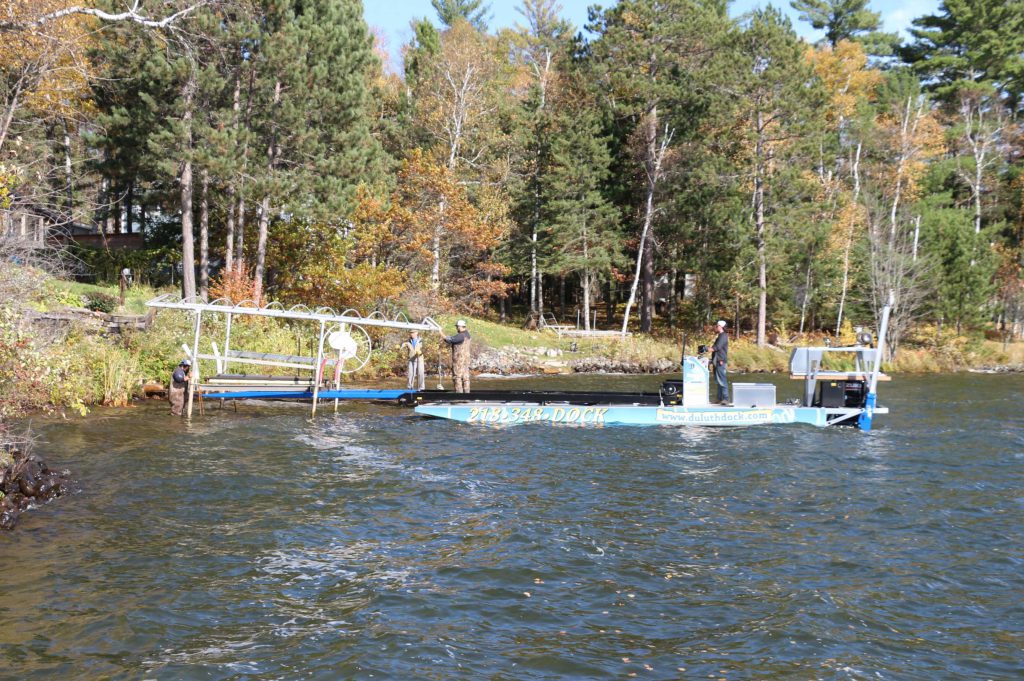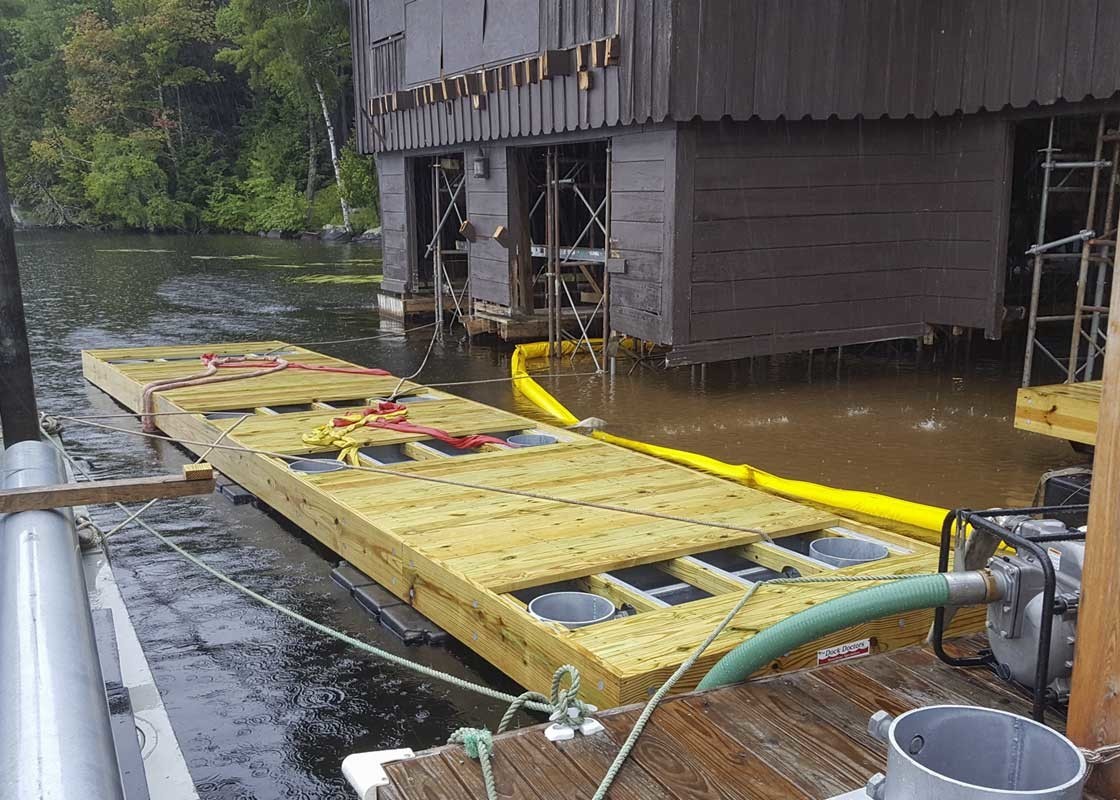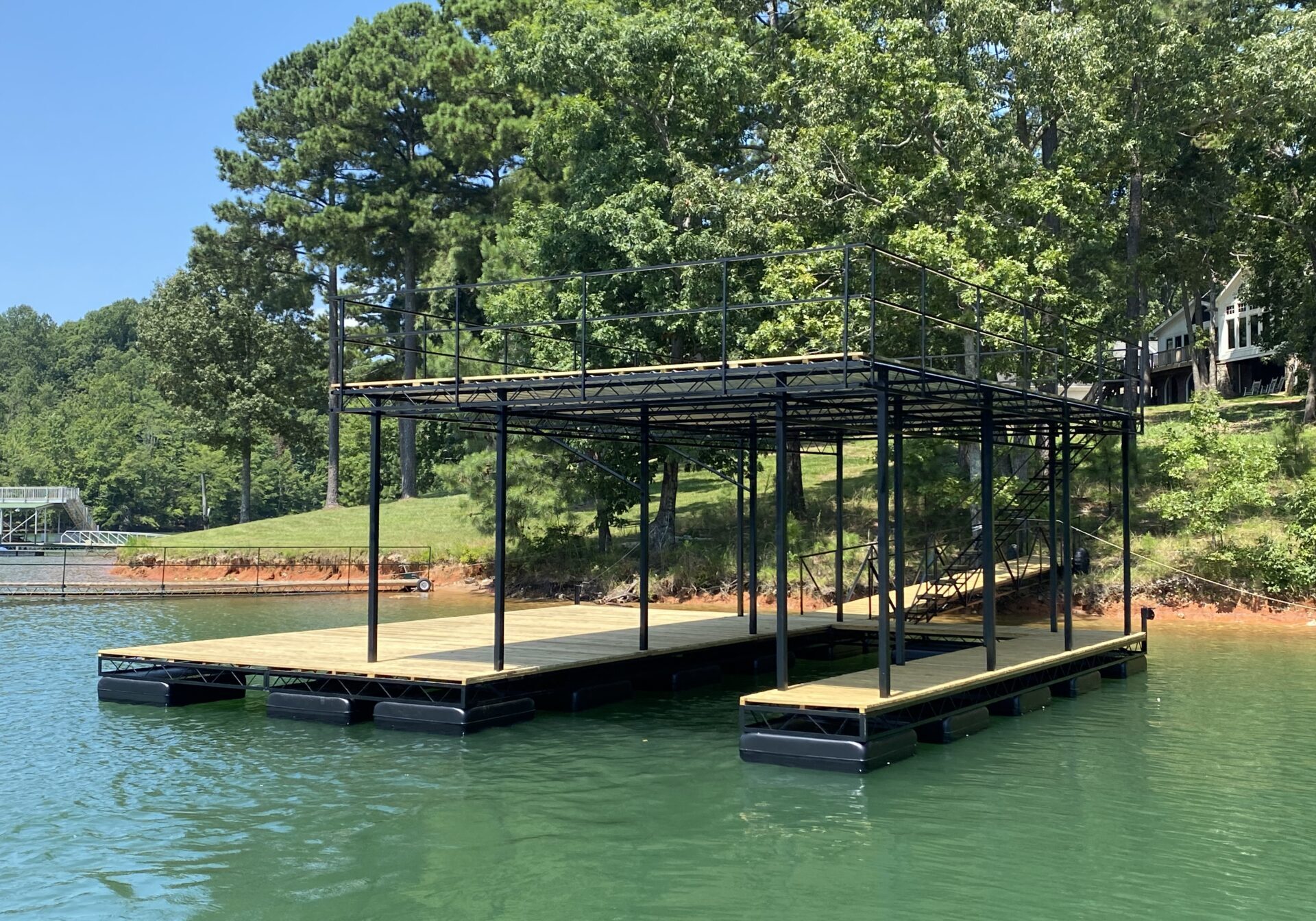The Significance of Timely Dock Repairs for Beachfront Safety
The Significance of Timely Dock Repairs for Beachfront Safety
Blog Article
Effective Dock Repair Service Techniques: Making Certain Architectural Honesty
Making certain the structural stability of anchors with efficient repair work techniques is vital for the durability and safety and security of marine centers. Subsequently, choosing the best repair products, such as corrosion-resistant alloys and composite materials, is vital for toughness.
Assessing Dock Damage
Examining dock damage is a crucial primary step in making certain the structural honesty and security of any docking center. This initial evaluation entails a comprehensive examination to determine both visible and concealed problems. Trick facets to analyze consist of the dock's foundation, pilings, decking, and equipment. Each component must be scrutinized for signs of wear, rot, deterioration, or various other forms of degradation that could endanger the architectural honesty.
Architectural engineers or qualified examiners generally execute these evaluations using specialized methods and tools. For instance, underwater examinations could utilize finder tools or from another location operated vehicles (ROVs) to discover submerged damage. Over water, aesthetic inspections are enhanced by using wetness meters and various other analysis tools to reveal underlying issues not quickly visible to the nude eye.

Picking Repair Service Products
Picking the suitable repair materials is a crucial action in the dock repair procedure, one that straight influences the longevity and performance of the repaired framework. Product choice need to be driven by factors such as ecological problems, load-bearing demands, and compatibility with existing dock components. Wood is a standard option for anchors due to its all-natural resilience and visual appeal. Nonetheless, picking the right kind of wood, such as pressure-treated lumber or naturally rot-resistant species like cedar or teak, is vital to stand up to aquatic environments.
Along with wood, composite materials are significantly popular due to their longevity and reduced maintenance needs. Composites, normally made from a blend of plastic and wood fibers, provide superb resistance to rot, insects, and UV damage. For metal docks, selecting corrosion-resistant alloys such as galvanized steel or marine-grade light weight aluminum is important to protect against rust and guarantee architectural stability in saline water conditions.
Epoxy materials and marine-grade sealers are important for repairing cracks and sealing joints, providing a water-proof barrier and enhancing the dock's overall stamina. By carefully selecting premium products, dock repair work can attain resilient outcomes, therefore guarding against future degradation and ensuring risk-free, trustworthy use.
Architectural Reinforcement Strategies
Efficient structural reinforcement methods are essential in making certain the security and long life of dock fixings. This technique is specifically reliable for anchors exposed to heavy loads or extreme ecological conditions.
Another vital technique is the application of fiber-reinforced polymers (FRP) These products provide high strength-to-weight ratios and outstanding resistance to deterioration, making them optimal for strengthening wood or concrete anchors. FRP can be used in sheets or strips and bound with epoxy materials to improve architectural honesty.
Bracing and securing systems also play a vital role in architectural reinforcement. Cross-bracing, utilizing metal or wood beams, can counteract side forces, reducing swaying and activity. Securing systems, such as helical piers or driven stacks, offer a steady foundation by moving lots to deeper, extra stable soil layers.
Last but not least, the assimilation of load-distribution plates can help disperse weight extra equally across the dock's surface, minimizing local stress and anxiety factors. These techniques collectively make certain that docks remain secure and durable, capable of withstanding the rigors of their operational environment.
Advanced Repair Techniques

Another sophisticated technique involves undersea welding, which enables repair services to be performed without the demand to dewater the area. This technique is specifically useful for attending to structural concerns in immersed dock components, guaranteeing marginal interruption to procedures. Boosted welding techniques, combined with robotic systems, deliver accuracy and integrity, consequently extending the life-span of the dock.
Furthermore, cathodic protection systems are applied to avoid corrosion in metallic dock frameworks. By utilizing sacrificial anodes or satisfied present systems, these methods efficiently mitigate the electrochemical procedures that lead to product wear and tear.
Lastly, advanced monitoring modern technologies, such as structural wellness monitoring (SHM) systems, offer real-time information on the condition of dock structures. view These systems allow proactive maintenance and timely interventions, inevitably making sure the long-term structural stability of the dock.
Upkeep and Avoidance
Maintenance and avoidance are fundamental principles that underpin the durability and safety of dock frameworks. Routine assessments are extremely important, enabling very early detection of deterioration, possible look at this site weaknesses, and ecological effects. An aggressive method, entailing regular checks for rust, rot, and architectural changes, mitigates pricey repair services and extends the dock's operational life.
Safety nets ought to include applying protective coverings to steel components to defend against rust and making use of treated wood to resist degeneration. Furthermore, making certain appropriate drain and ventilation can stop water accumulation, which is a typical reason of structural destruction. Incorporating quality materials and sticking to manufacturer standards during building and repair service phases likewise play essential roles in enhancing sturdiness.

Training employees in dock upkeep ideal methods ensures consistent application of safety nets. Leveraging technological advancements, such as drones for evaluations and sensing units for real-time monitoring, can further boost maintenance efforts. By focusing on upkeep and avoidance, dock proprietors can guarantee architectural stability, functional security, and affordable administration over the dock's life-span.
Final Thought
In final thought, maintaining the architectural stability of aquatic centers necessitates thorough dock fixing strategies. Advanced repair work strategies, coupled with routine maintenance techniques, guarantee the dock stays safe and operational under diverse environmental problems.
Guaranteeing the architectural honesty of anchors with reliable repair work methods is paramount for the longevity and security of aquatic centers.Picking the appropriate repair service products is a pivotal step in the dock restoration process, one that straight affects the longevity and efficiency of the fixed framework.Reliable architectural support strategies are crucial in making certain the security and long life of dock repair work. By prioritizing maintenance and prevention, dock owners can ensure structural integrity, operational safety, and cost-effective administration over the dock's life expectancy.
In verdict, preserving the structural integrity of aquatic facilities necessitates extensive dock repair work strategies.
Report this page